Argentinian collector Benedicta M. Badia de Nordenstahl is the kind of collector who seeks young talents who challenge the political and socio-economic status quo; who disrupt stereotypes, gender roles, and aesthetics givens. Having lived in South America and the United States for decades, she has over 20 years of experiences of working in the art world. Currently based in Singapore, where her home has become a destination for local museum after-parties or informal gatherings.
Benedicta M. Badia de Nordenstahl shared her view points with LARRY’S LIST: what transformed buying into “collecting” art; when her gun-shy moment is; why she is not so interested in exhibiting her collection in a museum context; why she calls herself a nerdy collector; what kind of art world actors become inconsequential in her view; and how she is working on empowering gallerists in younger art markets.
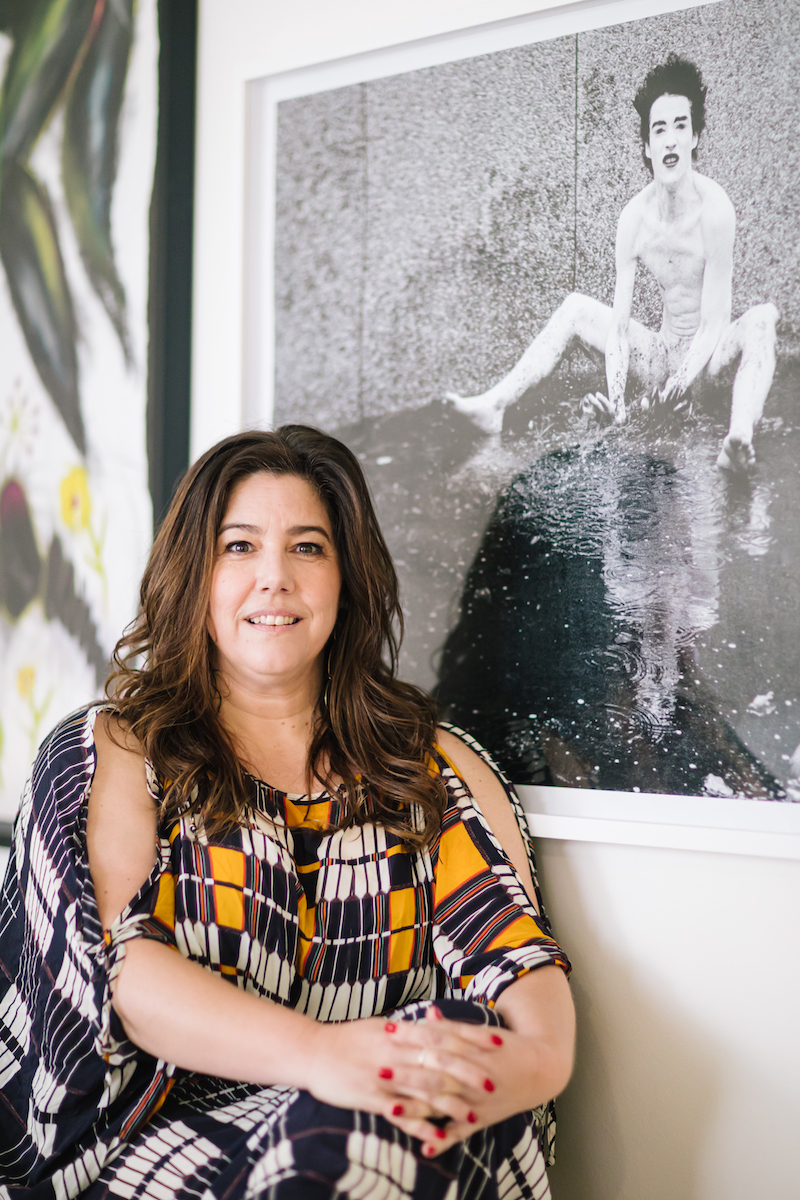
Collecting
What made you want to start collecting art? What is the main motivation behind your collecting?
Around 15 years ago, I started buying art while working in an art gallery, when I saw first hand the benefits of investing in it. However, I do not consider sporadic art buying as collecting per se. I started collecting the day I decided an art collection can tell a story. That was probably six years ago, and several factors influenced it. The first one was when I started coordinating the Art Basel Miami Guided Tours (by Artnexus). It is not the same to guide an exhibition in a museum than at an art fair where you have to decide what to talk about in 2 days. I worked with a team of around 14 curators to prepare for those two days. We analyzed trends, previous fairs, the selected galleries, narratives, relevance of what we wanted to say in advance, and then we searched for the works that would fit our decisions. We sort of subverted the order of an art tour. We had a base script, but each curator was free to talk about their own choices. The other art-related thing that happened is that I started organizing art encounters in Chicago, where I searched for a way for art to be relevant and exciting to people who were not from the art world, by connecting art through human emotions, for example, Doris Salcedo’s retrospective at the MCA, we worked on grief; the Pop Art show, on being uncomfortable, and the never-ending regurgitation of life’s cycles; Helio Oitica’s retrospective at the Art Institute on being present or absent; and Kerry J Marshall’s on identity formation.
With time, I realized that I was allowing people to reflect on their feelings through art. Although, the last drop was our tour operator. We travel with our children extensively, devoting many of our resources for them to have a real multicultural approach to life. A friend of ours recommended Context Travel, and as their name says, they show the world within a context. Through the eyes of a university professor of architecture and urbanism, we saw Bangkok, as we analyzed public vs. private spaces for social leisure in the city or the social stratification that had evolved from the construction of the high-rise train. In Japan’s fish market, we studied with a sociologist how Japanese history influenced their culinary traditions. Eventually, these three factors cemented the belief that storytelling and context have a profound impact on our lives. It was the moment I thought it is not what we buy; it is what we do with it, that transformed buying into “collecting” art.
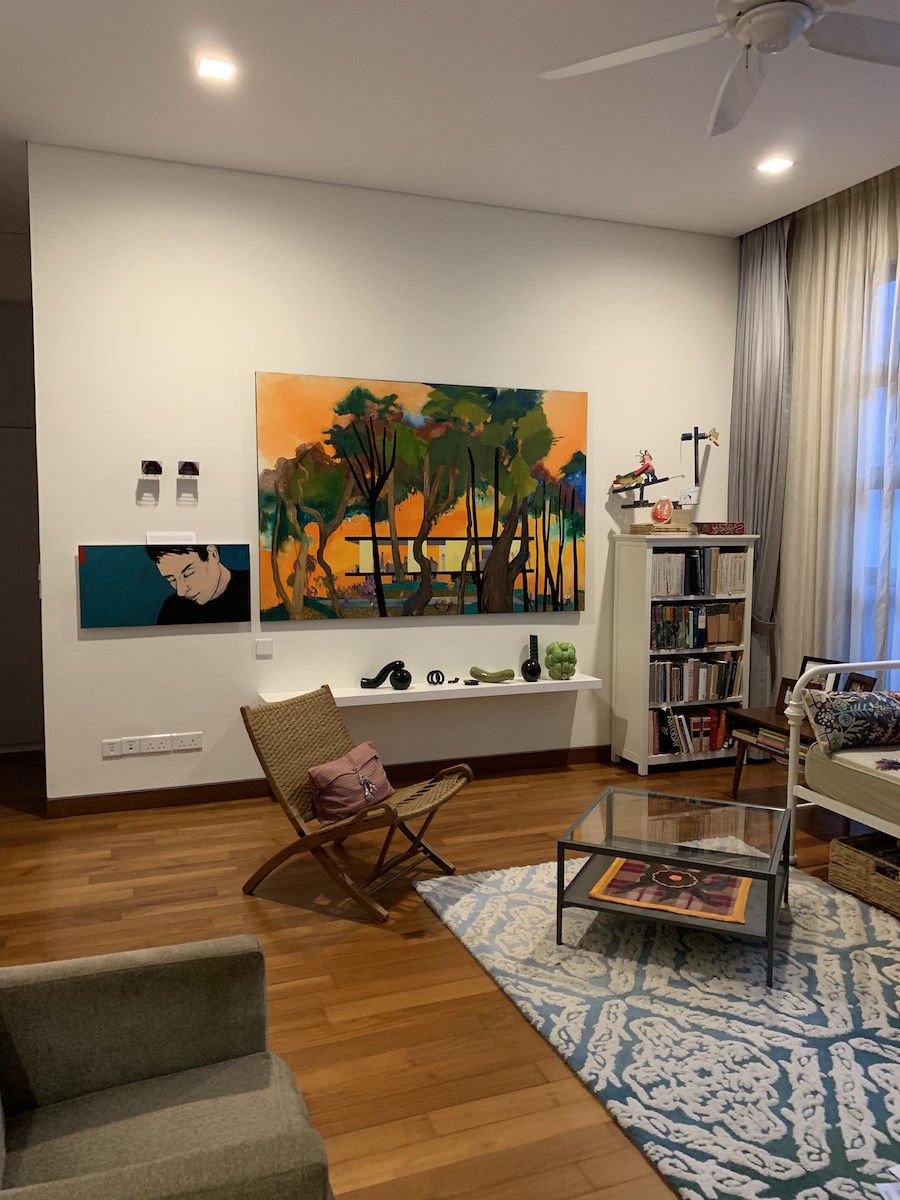
Is there any particular type of art that has consistently attracted you, or anything that unites all the works you have acquired?
Uhh, that is a difficult question, the closest to my collecting system would be Abby Warburg’s panels (and I do not mean to compare myself with his geniality)— I found a sort of sounding board in his way of thinking. In the collection, you will probably recognize two significant buying “lines”: there is a very clinical, intellectual, acerbic, and dry-humored side that connects with artists like Guan Xiao, Katja Novitskova, Wong Ping, Diego Bianchi, Gala Porras Kim, or Lawrence Abu Hamdan. In parallel, there are artists who delve into the essential, the ontological, primitive or uterine like José Carlos Martinat, Eduardo Basualdo, Carolina Caycedo, Erika Verzutti, Carmen Argote, Gabriel Chaile, I- Lann Yee, Aditya Novali, or Tania Candiani.
You like artists who push boundaries. Can you give some examples from your collection?
These two artists are on the opposite spectrum of the world. Manal Aldowayan, is one of the few female artists from Saudi Arabia that examines personal and political issues related to women’s rights in the context of ultra-conservative Saudi Arabian laws, while Valentín de Marco, is a young artist from a rural town in the vast Argentine Pampas disemboweling heteronormative conventions.
I met Manal during ARCO 2019, who is a force of nature, of fierce energy that owns a joy for life that is almost indignant. Her work is counterintuitive, focused on the never-ending prescriptions, the impossibility, and negations of her Arabic culture, she empowers those restraints with beauty. It is not a condemnation, it is a sophisticated apology of crippling conventions. An enchantress that whispers in your ear ‘you will never be enough,’ Manal comes from a complex heritage, where there is not “a” single executioner, but an invisible social contract. In her work, what’s unattainable takes material form as she shapes its limits.Paradoxically, as she sublimes ironclad restrictions, she also applies relentless pressure in a determined quest for a fracture in the social contract of her culture.
The erogenous pleasures of a “Gaucho,’ a surly male figure comprising the workforce behind Argentina’s agricultural economy, remains an illicit fantasy and taboo. What does an isolated rural man do to satisfy his carnal desire? Valentin’s body of work started a long time ago, at the birthplace of Argentina’s ‘national being’, in high correlation to colonial oligarchical rural wealth and Catholic religious fervor. As one of the nation’s cultural symbols, today’s ‘mate’ drinking has a deep significance, both as a daily popular ritual and an intrinsic moment of the day of a ‘gaucho’. That past colonial elite’s luxurious devoutness, forced that modest ritual into producing chiseled and embossed silver gourd ‘mate’ sets and ‘rural’ and religious objects, becoming a long-lasting artisanal genre: ’Platería Criolla.’ Re-Signifying the traditional craft, Valentin, produces a deceiving, yet precious silver ‘mate’ gourd, thus the symbol of social righteousness becomes an object of carnal rejoice. The ‘gaucho’s’ hora del mate, turns into a discovery of his most desired temptations.
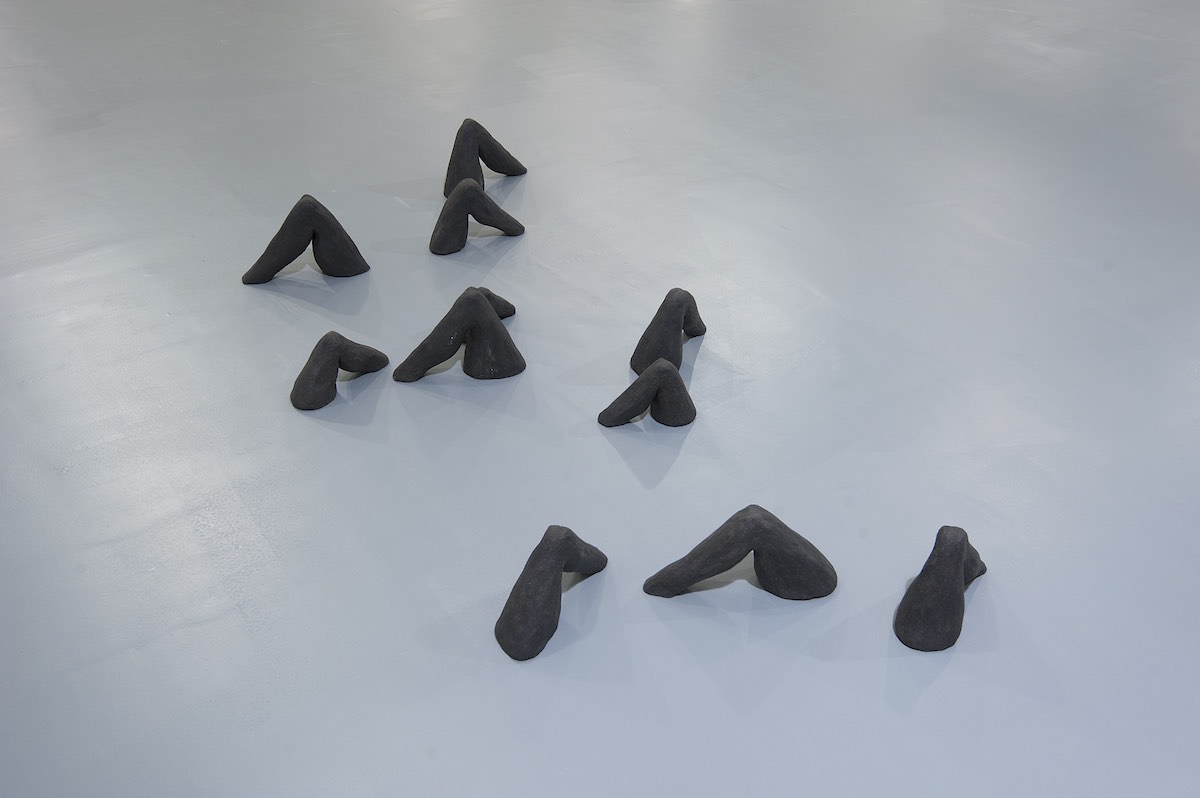
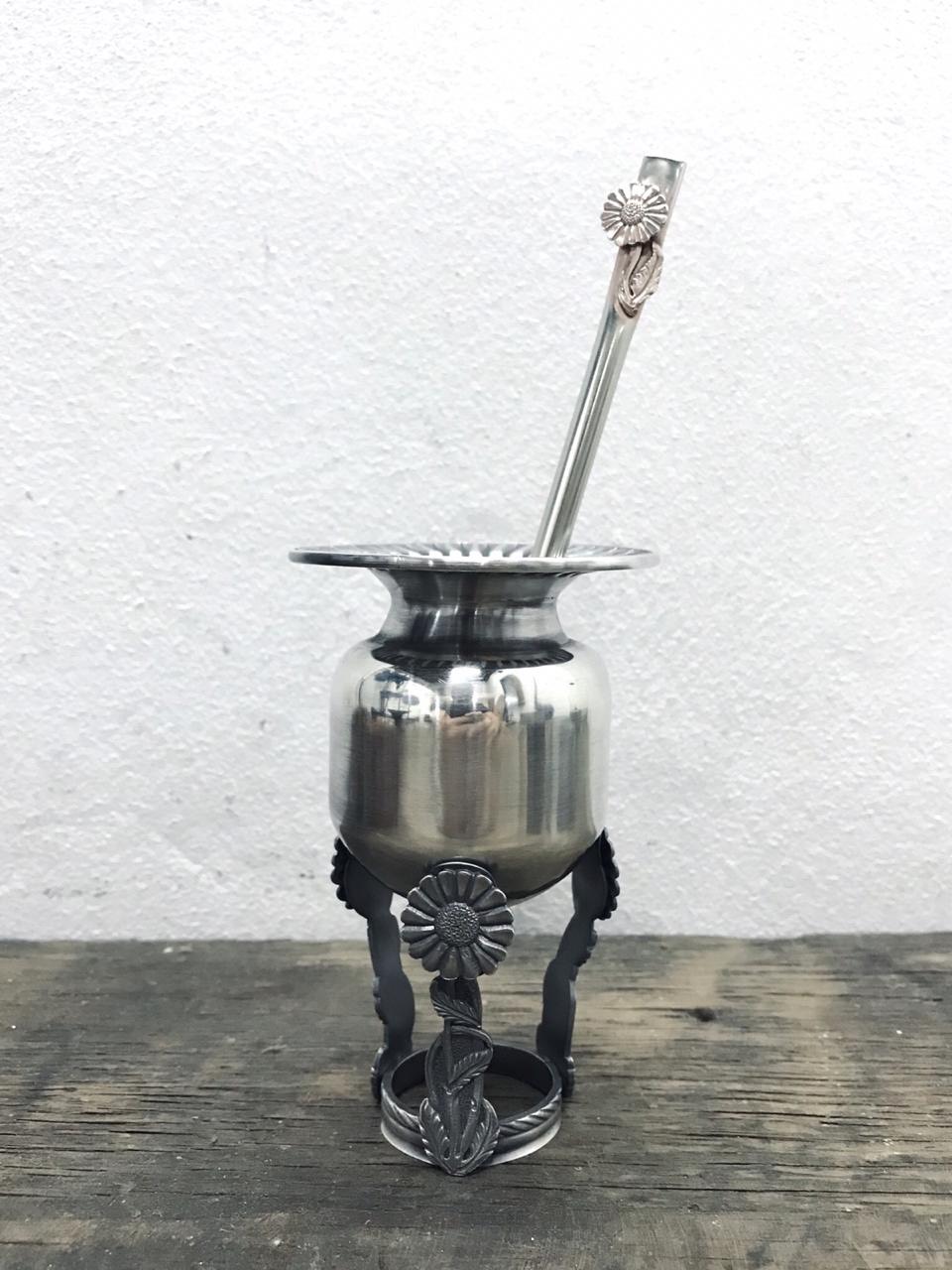
You also seek young artists that challenge the political and socio-economic status quo, disrupt stereotypes, privilege, gender roles, and aesthetics givens. What are the political/socio-economic issues that always concern you, or come to your attention lately?
This is a difficult question because these issues are not the same in my country, Argentina, or where we plan to retire, United States, or where we live now, Singapore, or Asia at large. If I had to choose one for all of them, it would be ignorance. Many of the world’s problems stem from the social constructions that allow humans to conceptualize the ‘Other,’ that abstraction justifies narratives that allow for actions otherwise ethically unthinkable. Once you learn that the ‘Other’ has feelings, has a family, has dreams and hopes, you cannot justify your lack of commitment and indifference. For example, if we talk of ‘illegal immigrantion,’ that’s a general concept that rarely triggers empathy or calls for action. However, if I were to tell you the story and struggles of my brother and his family who had to emigrate to another country, the feelings change entirely. Ignorance leads to detachment and indifference.
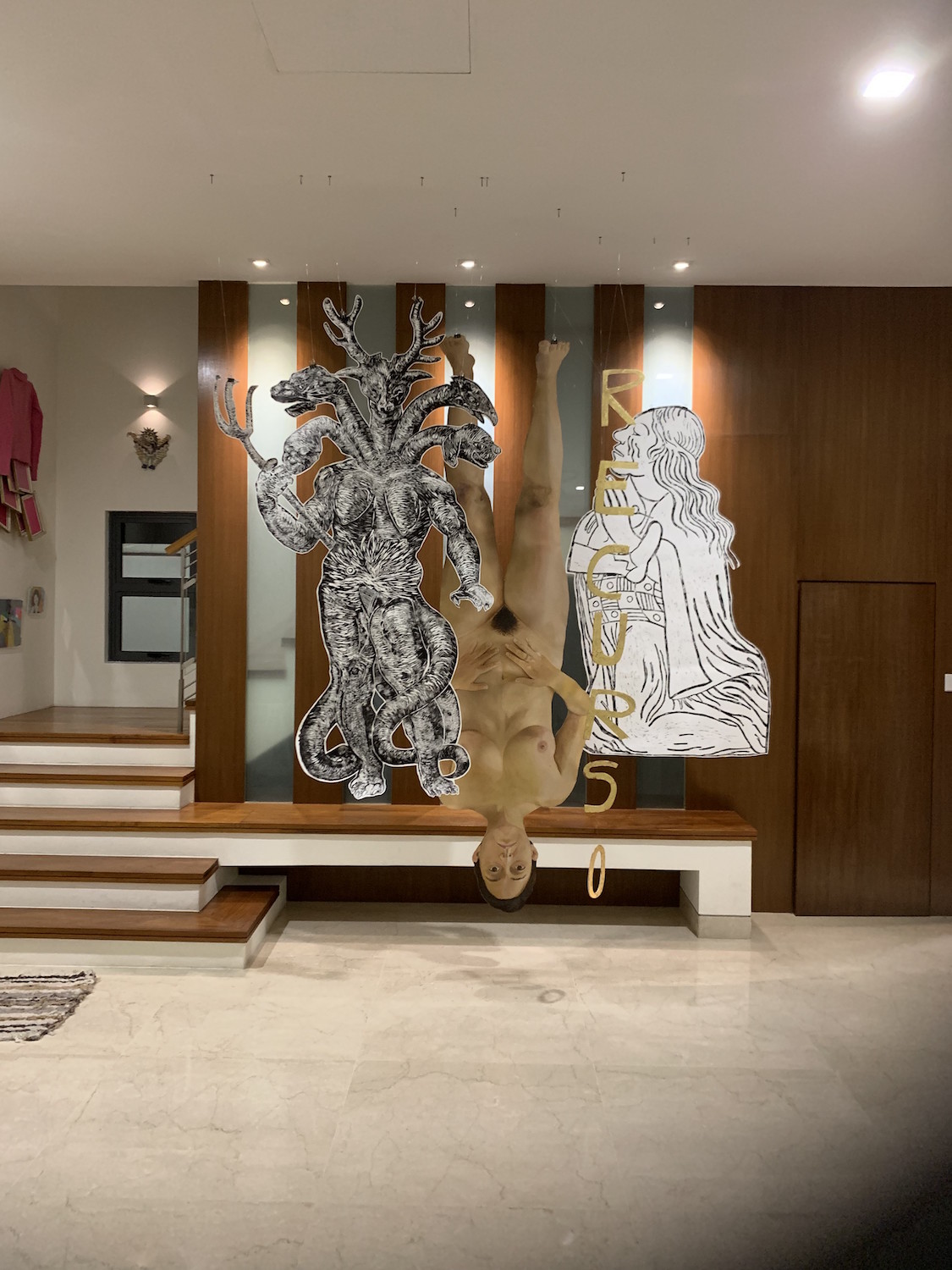
What were the first and the latest artworks you purchased?
I cannot recall which work I bought first, but definitely, the first “official” one was at ArteBa Fair, back in 2005, a work by Brazilian artist Sonia Gomes. It is also hard to pinpoint the latest artwork. My buying system involves an ongoing discussion with the galleries about the artist’s work to choose a work that resonates with the rest of the collection, more often than not, I am discussing more than ten works at a time, but the actual moment of buying comes on its own, and it is the most inconsequential moment. The moment ‘all’ of ‘me’ says: ‘Now, this one!’ Many times it does not coincide with the actual moment of purchase (and the gallery might not even know about it) Think of it as when you hear the “click” of legos uniting. That is when I am sure. Emotionally, probably Osias Yanov, was the last one. I discovered his work almost a year ago in Nora Fisch Gallery. I was very intrigued, as a huntress, I circled around his work using all my senses for a year and sneaked into his work online to see a little more, but I could not grasp him completely. When I heard all about his performance, “Coreografias de Sal,” that was the moment when I saw the roadmap to the artwork. The rest is paperwork.
How many artworks do you own? Where do you display your collection?
We own a little over 150 works. We do not display it other than at home and on specific loans. The main reason for this is the ‘why’ we collect. We live with art; we enjoy it, art is a constant reminder of who we should be, art tells our story. In our home, art has the same emotional value as a family gathering, sharing food, or a great conversations with a good ‘vino’ in those magical nights when you stay awake trying to solve the world with your friends. I cannot conceive our art to be shown without all that magic.
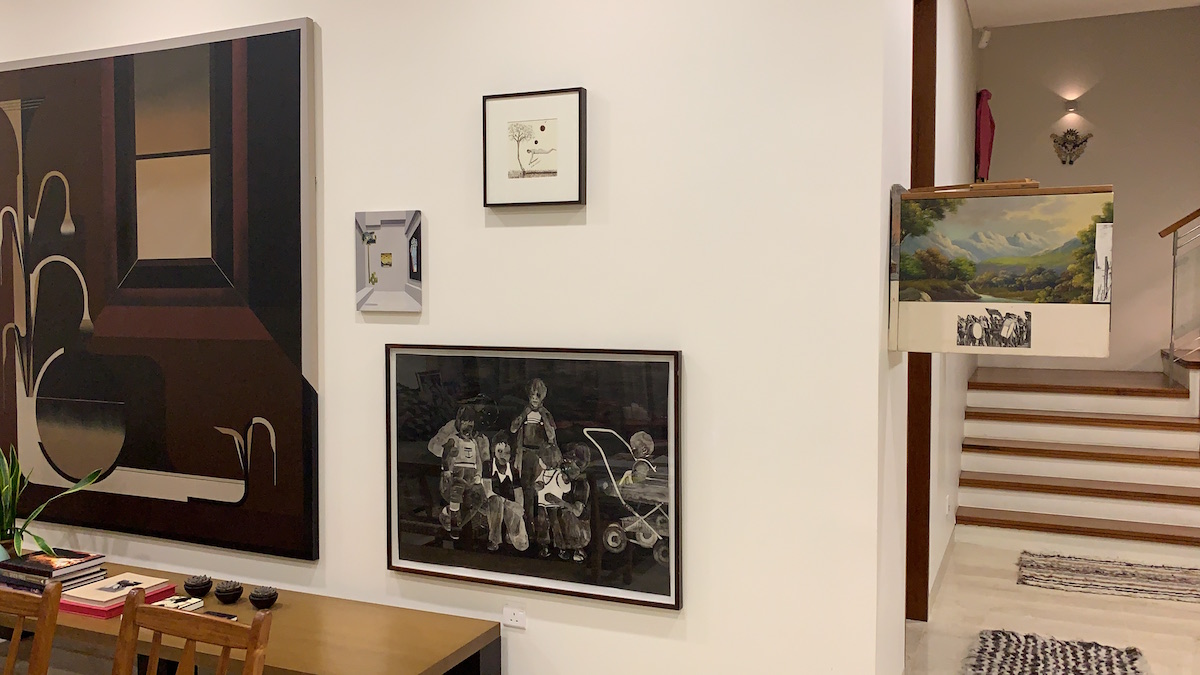
You opened your house for local museum after-parties and informal gatherings. Have you ever presented, or would you wish to present, your art collection publicly?
As I said previously, no, I would not. The only way I could imagine the collection exhibited is at schools or within an education program, but not within a museum context. At home, art is related to pleasure and community building. Why would I expose it to anything other than that? Instead, I love to enjoy it with people with purpose, with feelings, seeking an intimate relationship with art, our home will always be open for such.
Is there any kind of artwork that can make you write a cheque without any consideration?
Yes, I have those “emergencies”. They are usually a bodily reaction to the work. I get jittery, and I feel I need to do many things at the same time, leave, go to the bathroom, steal the work, have sex, or stop people from getting near it. If it is a work above specific price range, I can control the urge (be responsible) and work with the gallerist to see the complete body of work and plan the purchase together.
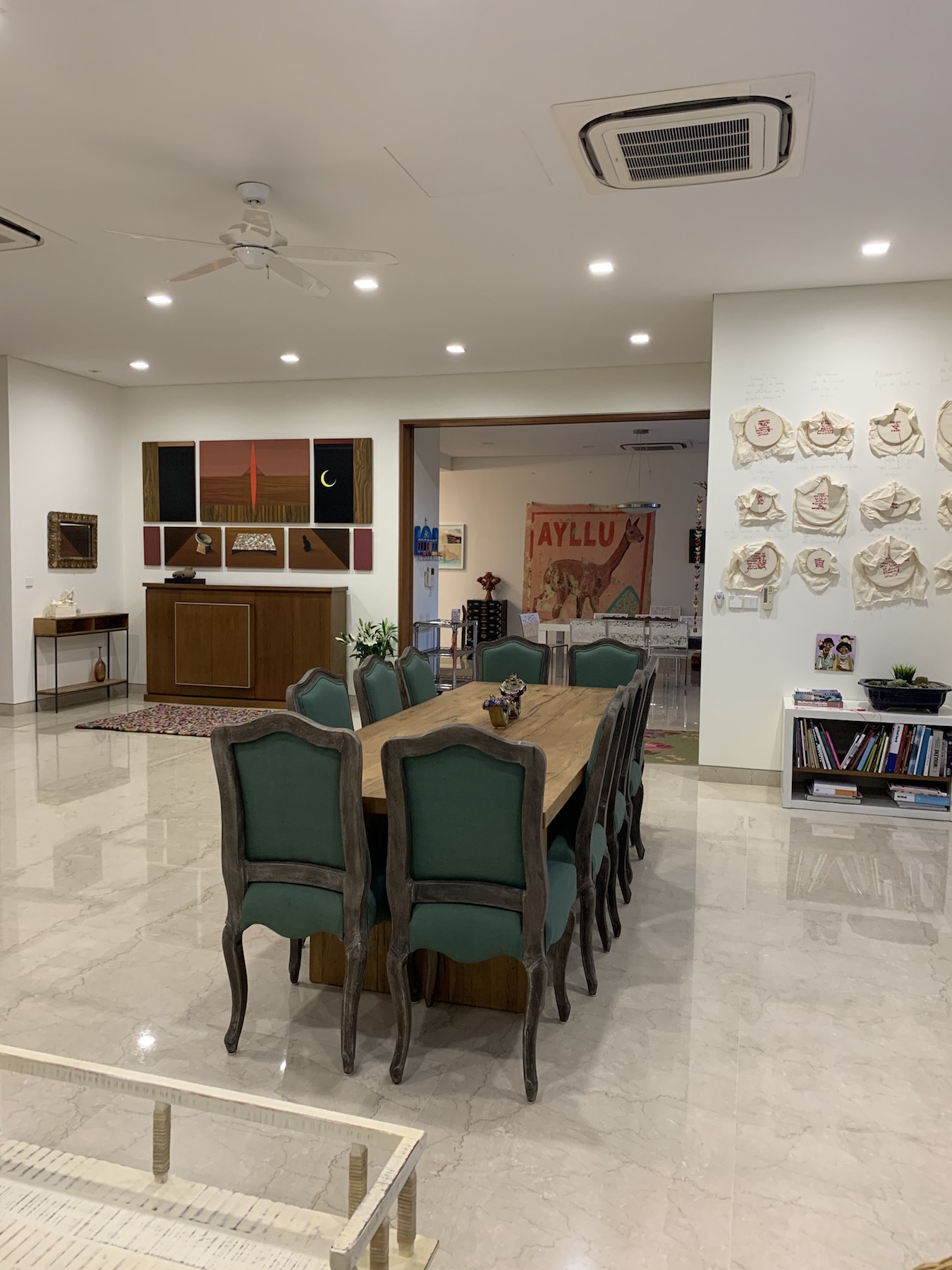
What is your most treasured artwork?
Hopefully, by now, if people are reading this, they understand there are no favorites. They all belong to our universe.
You called yourself a “nerdy collector. ” What does that mean?
Hahaha, it means I have always been a bookworm. My nickname as a child was a children’s cartoon character that had encyclopaedic knowledge. More often than not, my nose is inside a book. I crave intellectual stimulation, but especially when I find myself challenged and out of my depth. Imagine the glee I have when I cannot understand an artist’s work, I can grasp glimpses of it, but the more it evades, the more I investigate or think about the work. If, by any chance, after drooling over their work for months, I meet the artists personally, I completely freak out, start giggling and go gun-shy.

The Art World
What is your art-world pet peeve?
I do not like people who have specific “power” in the art world and do not understand the ethics of withholding it—the responsibility of being a role model. Glorified actors of the art world in power positions often lack generosity or basic human decency. Even though these people “think” they have power (which is not necessarily good), they all have to go to the bathroom and die like any regular mortal. All human beings want to belong; the moment a curator, museum director, gallerist, artist, or fair director performs an exclusion formula to sustain their “persona,” is the moment they become obsolete. They have lost the notion of what the real art world should be about and then become inconsequential.

Who inspires you the most in the art world?
“Los valientes” Those who know they will not win and yet they do it regardless. Those who confront the status quo alone. Those who take risks. Those who are surrounded by ugly and yet have hope.
In addition to being a collector, you also see yourself as a researcher, would you say these are different roles actually?
Those are all functions, that I have performed since 2000s when I started working in the art world and have defined who I am today. However, I am not working in those capacities now. Yet, I apply that knowledge to the collecting practice.

How is your experience as a member of the Guggenheim Museum’s Latin America Circle Acquisitions Committee so far?
Haha. What can I say? I met Pablo in 2017, during CIMAM in Singapore. We first bonded over our shared dry humor, and then through our likes and dislikes in art. Long story short— two years ago, I joined the Latin Circle, where I found a fun, loving, generous, and committed group of Latin American art “apasionados.” Admiration and mutual respect are underlying premises for these kind of groups, but I have also found a healthy dynamic in the acquisitions discussions, even though we are all from different countries, I have not seen one petty attitude or push to benefit any country in particular over the other. I do not know if it is Pablo’s and Geannine’s guidance that keeps us all in check (and we are indeed a rowdy bunch), but even one of our Chairs, who could exercise certain pressure on the group, has patiently waited for her country’s turn to buy a work. (She is also the voice of reason of the group)
Most importantly, this group of people is very much involved in their own countries’ local art scenes, helping support their own as much as they can. At the same time, they are committed to seeing Latin American art represented in a United States institution appropriately. This dual support policy, local and international, talks about an honest and frank desire to help. It talks about genuine care. Amongst us, we share information and playful banter; we travel together, share our experiences, host each other when traveling, have dinners together. I have found real friends in the group, and I might have found one member that we highly suspect could have been my twin brother, and they probably separated us at birth. :) I am very proud to be counted amongst these people that, with no ‘affectations’ are a real force to be reckoned with in the art world, genuinely motivated by the desire to be part of the solution.
I would like to add that, in light of recent events, United States’ museums are being held accountable for the pervasive lack of diversity in their teams and culture. Even though, as a Latina, I haven’t been a victim myself, I agree, there is still a long road ahead. But museums are an easy target. The whole art world has deluded itself in thinking it is inclusive and diverse and it’s proud to uphold a moral high ground. The number of minorities and lack of social diversity of art workers in auctions houses, art fairs, galleries, biennales, publications, etc. is appalling. How hypocritical can we be, when we are hearing rumours that a leading art fair is entertaining conversations with a far-right media conglomerate? In times of reckoning we seem to forget that European colonial narratives were an imperative for systemic racism. Our focus should involve ‘all’ actors of the art ecosystem worldwide. As an art collector, I will not condone institutions (commercial or not) who will not embark in a profound self-reflecting, morally sound transition, but I will not abandon ship either. We have the moral responsibility to occupy these spaces in the system to generate changes from within. It is more important than ever to engage, make ourselves accountable and stop the blame game, so we can transform the gesture into action and then action into real change.

You are also working on empowering gallerists, especially tailored for younger galleries and galleries in regions which do not have a long-standing art market structure. How did you come up with this idea in your role as a collector? And who does this practically look like?
In a regional Latin American art fair, I found a great young artist, upon asking for the price, it was ridiculously expensive, and her CV could not sustain that price internationally. Soon after, in an Asian art fair, I met a young Japanese artist that looked promising. He was recently out of art school, and his price value was over US$ 20.000, and I estimated a 5000US$ value. Both artists had a price disparity from their domestic to their international markets. Whereas the Japanese artist had a mature local market that could sustain that price, the Latin American artist had to deal with exchange rates in a non-viable situation. I started asking myself ‘who teaches these young gallerists pricing policies?’ I looked for places to learn about shipping, insurance, organizational charts, roles, legal matters or curatorial lines. There was an alarming lack of material, where trial and error seemed to be the modus operandi for learning (a costly way) that eventually ended up killing the young projects.These places are the birthplace of what is important to me in the art world. However, as these galleries function for profit, they are ineligible for philanthropic support.
After much research, I found Deflina Foundation Collectors’ Residency. Collectors, as active actors of the ecosystem, can think their collecting practice beyond the act of acquiring objects. The residency seeks to jumpstart the collector’s goals, In my case, it is first and foremost to raise awareness and start a conversation on young galleries’ cyclical and endemic closures in emerging markets and ways to make them viable long term.
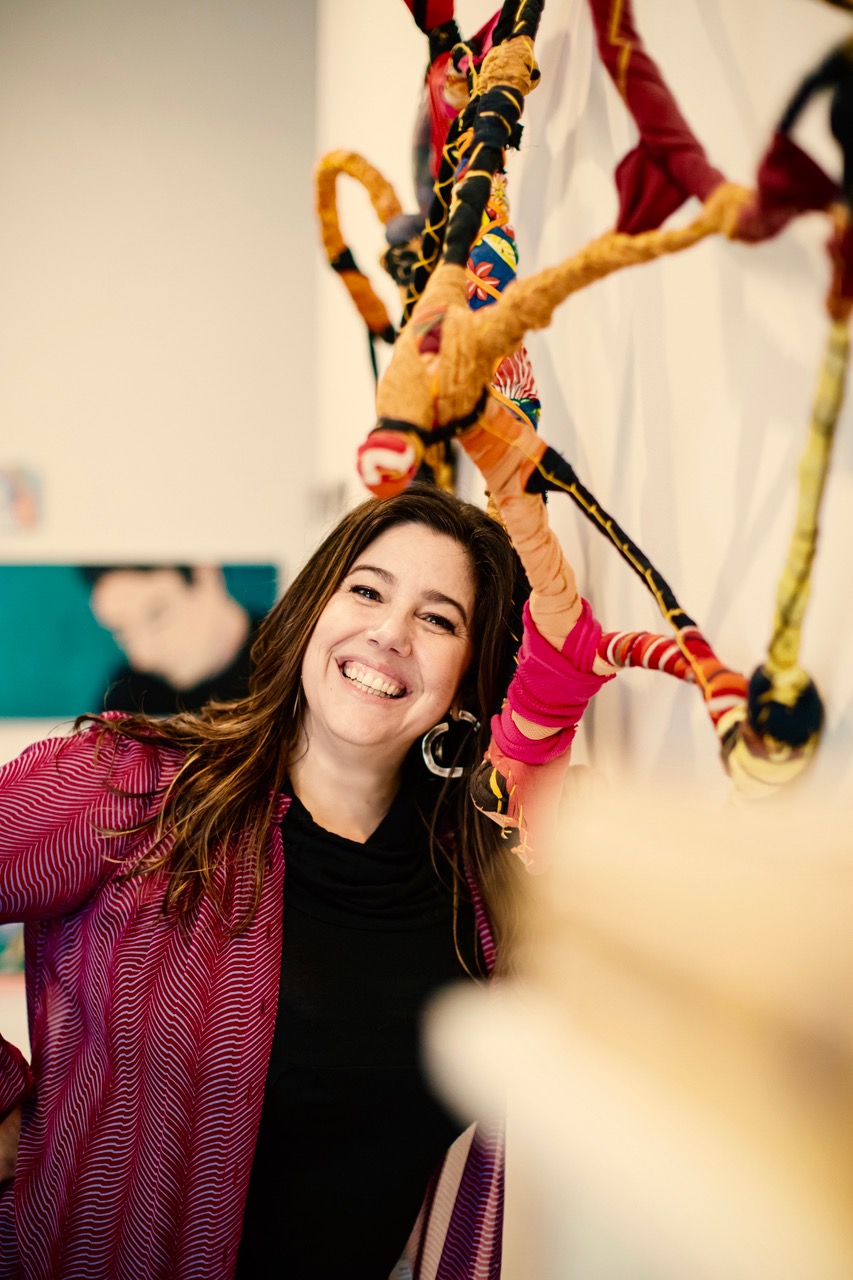
Can you name three emerging Latin American artists who should be on our radar?
You do know my wish list is highly coveted, don’t you? I cannot disclose the ones I have not invested in yet, but I can recommend the ones I have already bought. Following my heart, I will recommend artists from my country: Joaquin Aras, Veronica Meloni, and Lucia Reissig from Argentina are ones to look at.
What is your advice to young and fresh collectors?
Learn from the artists. They are the ones who know best.
A selection of artists Benedicta collects:
Aditya Novali
Carolina Caycedo
Erika Verzutti
Guan Xiao
Katya Novitskova





